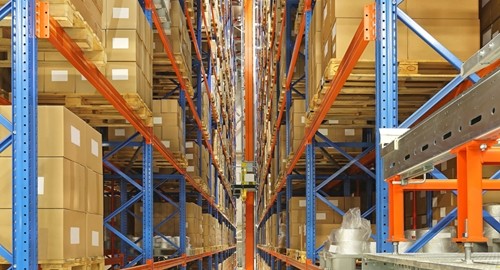
The rapid rise of the Internet of Things has combined with innovation in machine learning and autonomous vehicle control to drive significant strides for the robotics industry in recent years. As these technologies evolve, industries are ramping up their use of warehouses to improve operations and streamline tasks that are inefficient to handle with human workers. An IndustryARC study pointed out that robots may even be emerging as a solution for the rapidly aging workforce that is threatening to disrupt the global warehouse industry.
While robots present a great deal of promise, they also come with a significant learning curve. In particular, warehouse operators must figure out how to get robots and people to work well side by side.
Establishing a healthy environment for robots and humans
Robotics systems and humans are generally heavily segregated in work environments. Safety concerns are central to this divide, but it is also helpful to keep robots and people apart because robots focus on heavily repetitive tasks and have traditionally been kept stationary while humans move freely throughout facilities. A Forbes report explained that this operational climate is beginning to change.
According to Forbes, the increased use of autonomous mobile robots in warehouse settings bring a great deal of potential for innovation, but only if organizations can establish effective frameworks for getting them to move safely and efficiently throughout facilities. Warehouse management software systems are a critical part of this, as their ability to track the location of items, the logic behind efficient movement and the status of inventories allow the WMS to provide visibility into objects within a facility.
On top of the core warehouse management functionality, leading fulfillment services centers will also typically incorporate warehouse control software to ensure that all of the systems within a warehouse run as they should, the report explained. Combined, a warehouse management system and warehouse control system provide the data transparency and visibility needed to understand exactly what is happening in the warehouse at any given time.
The key, when considering the implementation of modern warehouse systems, is developing strategies to ensure autonomous machines are able to access that data and understand the full scope of the data that is on hand.
Understanding how robots think
Autonomous vehicles are typically programmed to respond to specific triggers and act accordingly. For example, if your warehouse floor is mapped out and specific traffic routes are established, a robot may be programmed to follow the most efficient route to an item, but stop or adjust in the event that the path is obstructed for any reason. This would allow a robot to, for example, identify an object or person in its path with a camera and stop for a set amount of time to see if that object moves out of its way. If the object does not move, it may be programmed to adjust its path accordingly.
This type of cause-effect programming can be effective at an entry level, but it is nearly impossible to predict and program for every possible scenario. This is where machine learning is coming into play. Machine learning technologies allow the software behind robotics systems to identify operating conditions and circumstances over time, taking in feedback from human programmers or operators, and use that data to adjust its tactics. If a robot learns, for example, that a certain route within the warehouse is often busy, it may automatically take an alternate path to its destination.
All of this functionality, however, is dependent on having a warehouse management system in place that is capable of informing how a robot operates.
Using a WMS as a foundation for a machine learning future
Imagine that scenario we just discussed about a robot choosing an alternate route to high traffic rates. In that basic scenario, the robot is noticing typical patterns and making a decision. In reality, robots could actually analyze all of the work orders and item locations in the warehouse and identify if, at any given moment, a specific route is likely to be obstructed or not. For example, if a robot is sent on an automated packing run, the machine can be set to look into the WMS for other activities happening at the time. If it sees that a few other robots are pulling items off shelves and set to travel toward it, it may choose to select an alternate path.
Similarly, machine learning can help robots identify how humans tend to move through the facility compared to robots and change its behavior depending on whether a nearby task is being completed by a person or by another machine.
These nuanced functions are a bit forward-thinking and are not necessarily the norm with robotics solutions at the moment. However, they emphasize where the industry is going and highlight the importance of clear data integration within the warehouse environment. The WMS is central to any kind of autonomous decision-making as a machine learning system needs as much data as possible to teach robots what the best actions are at any given time.
Whether you are already making a move toward advanced robots or envision the technology as more of a long-term strategy, the need to get your WMS technologies in order is a clear first step. Warehouse operators that have a robust WMS system running smoothly can position themselves to create the data transparency needed to ensure the smoothest transition into robotics possible.
